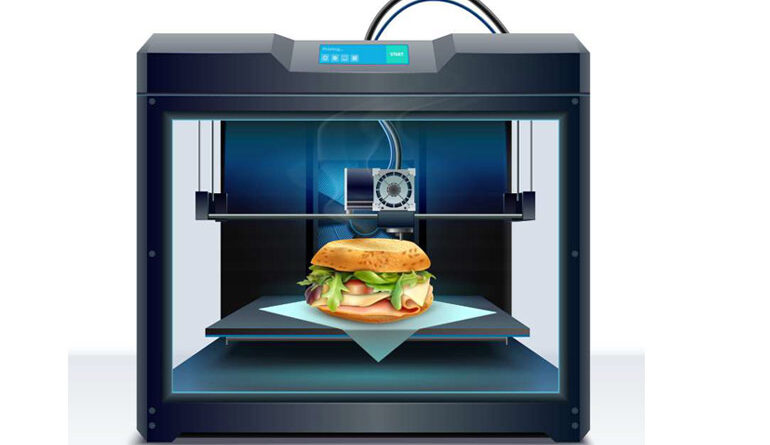4D Printing: A Shape-Shifting Technology, 2024
4D Printing
The phrase “4D printing” may initially conjure up ideas of time-traveling devices or interstellar portals, recalling ideas from science fiction. However, the addition of a fourth dimension—a dimension that goes beyond space and into time—marks a concrete and revolutionary development in additive manufacturing.
With 4D printing, the dynamic element of time is introduced, unlike traditional manufacturing methods that yield static products. This allows printed materials to go through preprogrammed transformations or self-assembly processes after production. This amazing feature creates a plethora of opportunities for designing devices that are able to change, evolve, and react instantly to outside stimuli.

With the addition of time, 4D printing is an exciting development in 3D printing technology. With 4D printing, materials that can self-assemble or change shape over time in response to specific triggers like heat, water, light, or other environmental conditions are introduced. While 3D printing enables the construction of three-dimensional items layer by layer, this technology is very different.
In this type of printing, the evolution or change of the printed object over time is referred to as the fourth dimension. Smart materials or composites, which include qualities that allow them to change shape, size, or functionality on their own, are frequently used in printing processes where this transformation is pre-programmed into the paper.
4D printing, also known as 4D bioprinting, active origami, or shape-morphing systems, builds upon the foundation of 3D printing but takes it a step further. Let’s dive into this fascinating field:
Follow our Digiknowledge.co.in page for the latest updates about bikes, cars, sports, lifestyle, and many more.
What Is 4D Printing?
By adding time as a new dimension,this is an inventive manufacturing technique that expands on the concepts of 3D printing. While 4D printing adds the element of time, it allows printed items to transform, self-assemble, or change shape autonomously over time in response to external stimuli. 3D printing enables the construction of three-dimensional objects layer by layer.
The term “fourth dimension” in 4D printing describes how the printed object changes dynamically after it is made. Smart materials or composites, which have the ability to react to certain stimuli like heat, water, light, or other environmental conditions, are sometimes used to pre-programme this development into the material during the printing process.
How Does 4D Printing Work?
To produce items that can eventually undergo controlled transformation or self-assembly processes, 4D printing makes use of cutting-edge materials and design methodologies. Although the procedure is comparable to conventional 3D printing, it adds more intricacy by using materials that are responsive to environmental stimuli, including light, moisture, temperature, and other variables.
The general operation can be summarized as follows:
The process starts with the design phase, which involves creating the thing that will be printed while considering its intended use, transformation, and assembly order. Key factors including material composition, geometry, and transformation triggers are specified in the digital model of the object, which is created using computer-aided design (CAD) software.
Selecting Materials: In contrast to traditional 3D printing, which mostly uses metals or thermoplastics, 4D printing requires choosing certain materials referred to as “programmable materials” or “smart materials.”
These materials are special because they can alter their size, shape, or characteristics in response to outside stimuli.
Printing Procedure: A 4D printer, which functions similarly to a conventional 3D printer but has extra features, is loaded with the selected smart materials. Building up the object’s structure, the printer applies layers of the smart material in accordance with the digital model. This approach may involve designing certain areas of the thing to react differently to outside stimuli, enabling controlled alterations.
Activation: After the item is created, it might need to be activated in order for the desired transformation to begin. Depending on the characteristics of the material and the requirements of the design, there are several ways in which this activation can occur. Heat, moisture, light, and chemical reactions are common activation techniques.
Where is 4D printing used?
The object that has been altered can now be used for its original function, which could include being a dynamic component for use in the aerospace, healthcare, or architectural industries, or it could be a self-assembling structure or gadget that changes shape.
What’s the difference between 3D and 4D printing?
A 2D structure’s limits are enhanced by 3D printing, whereas 4D adds time as a new dimension to the dimensional composition. change with time, to be more exact. Three-dimensional depictions remain in their hard, static form, while four-dimensional things change into various forms of motion.
What are some examples of 4D printing?
Things like weather-responsive clothing, self-assembling furniture, pipelines that adjust their width based on flow, and prosthetics that decompose after they are no longer needed… These are but a few of the current and upcoming uses for 4D printing.
What are the medical applications of 4D printing?
With its potential to revolutionize medication delivery, medical devices, tissue engineering, diagnostics, and medical devices in general, 4D printing holds great significance in the field of biomedical engineering.





Wow, incredible weblog format! How lengthy have you ever been running a blog for?
you make running a blog glance easy. The overall glance of your site is magnificent, let alone the content!
You can see similar here sklep internetowy
I’m glad to hear that you find the content helpful and enjoyable! If you have any specific topics you’re interested in or questions you’d like to explore further, feel free to ask
Wow, marvelous blog format! How long have you been running
a blog for? you made running a blog look easy. The full look of your website is excellent, let alone the
content! You can see similar here sklep online
Thank you so much for the kind words! I’ve been running this blog for the last 4 years, focusing on delivering informative and engaging content to readers like you. Making blogging appear effortless is all about finding the right balance between design, functionality, and content quality. I’m thrilled to hear that you find the format appealing and the content valuable. If there are any specific topics you’d like to see covered or if you have any questions, feel free to let me know!
Wow, wonderful weblog layout! How long have you been blogging for?
you made blogging glance easy. The full look of your site is great, let alone the content!
You can see similar here e-commerce
Thank you for the compliment! I’ve actually been blogging for last 4 years, focusing on providing helpful information and engaging content. Making blogging look easy is all about finding a balance between design, content, and user experience. I’m glad you find the layout appealing and the content valuable! If you have any questions or topics you’d like to see covered, feel free to let me know.
Outstanding feature
Thank you for your kind words! I’m glad to hear you find the recent posts engaging and valuable. Your feedback is much appreciated, and I’m happy to be added back to your daily blog list. If there’s anything specific you’d like to see more of or any topics you’re particularly interested in, feel free to let me know. I’m here to help!